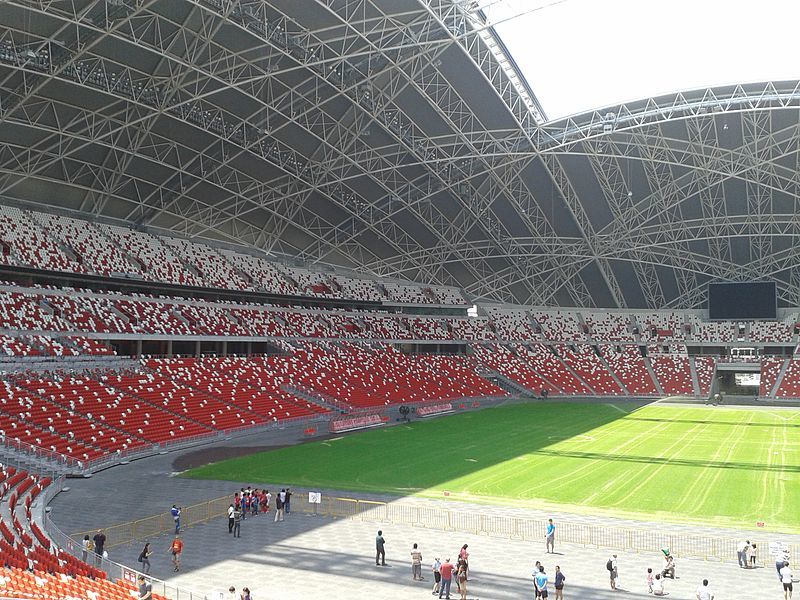Measuring 1,017-feet across, the national sports stadium within the Singapore Sports Hub is the world’s largest free-spanning dome, Dezeen reports.
The retractable dome can open and close to adjust the stadium’s interior with the island-nation’s capricious tropical climate.
The stadium, located in Singapore’s waterfront Kallang area, opened in June 2014. It was designed by a group of engineers and designers from Arup, DP Architects, and AECOM as part of the 86-acre sporting complex.
The stadium seats 55,000 people underneath its canopy, which is kept open when the stadium is not in use to help keep the grass pitch in good condition.
The retractable roof sections are made from translucent ETFE plastic, and the panels are supported with metal rigging that arches over the main pitch.
The stadium hosts a range of sports activities, such as cricket and rugby, and is the home base of Singapore’s national football team.
Find out more on Dezeen.
Related Stories
| Apr 12, 2011
American Institute of Architects announces Guide for Sustainable Projects
AIA Guide for Sustainable Projects to provide design and construction industries with roadmap for working on sustainable projects.
| Apr 11, 2011
Wind turbines to generate power for new UNT football stadium
The University of North Texas has received a $2 million grant from the State Energy Conservation Office to install three wind turbines that will feed the electrical grid and provide power to UNT’s new football stadium.
| Apr 8, 2011
SHW Group appoints Marjorie K. Simmons as CEO
Chairman of the Board Marjorie K. Simmons assumes CEO position, making SHW Group the only firm in the AIA Large Firm Roundtable to appoint a woman to this leadership position
| Apr 5, 2011
Zaha Hadid’s civic center design divides California city
Architect Zaha Hadid is in high demand these days, designing projects in Hong Kong, Milan, and Seoul, not to mention the London Aquatics Center, the swimming arena for the 2012 Olympics. But one of the firm’s smaller clients, the city of Elk Grove, Calif., recently conjured far different kinds of aquatic life when members of the City Council and the public chose words like “squid,” “octopus,” and “starfish” to describe the latest renderings for a proposed civic center.
| Apr 5, 2011
Are architects falling behind on BIM?
A study by the National Building Specification arm of RIBA Enterprises showed that 43% of architects and others in the industry had still not heard of BIM, let alone started using it. It also found that of the 13% of respondents who were using BIM only a third thought they would be using it for most of their projects in a year’s time.










